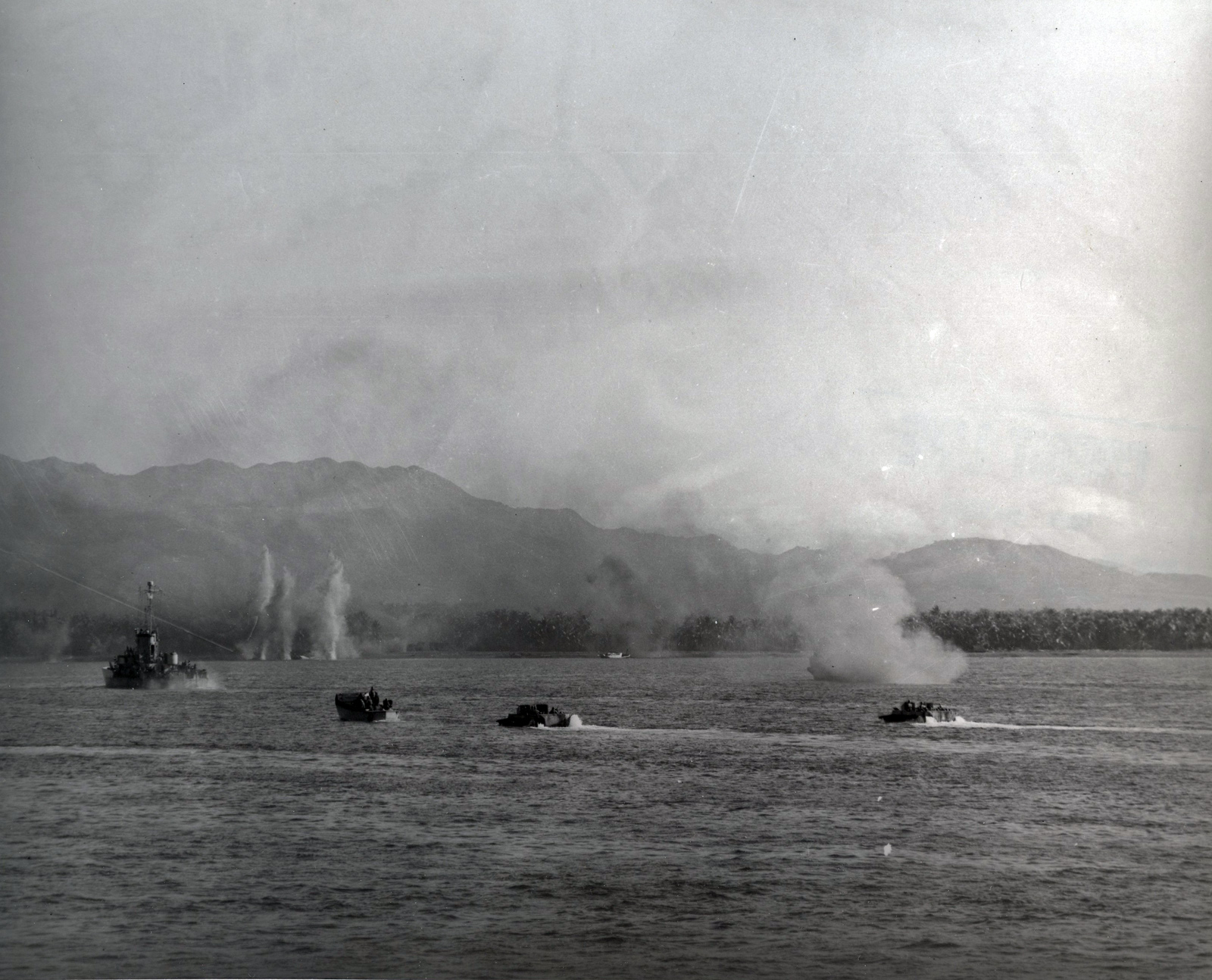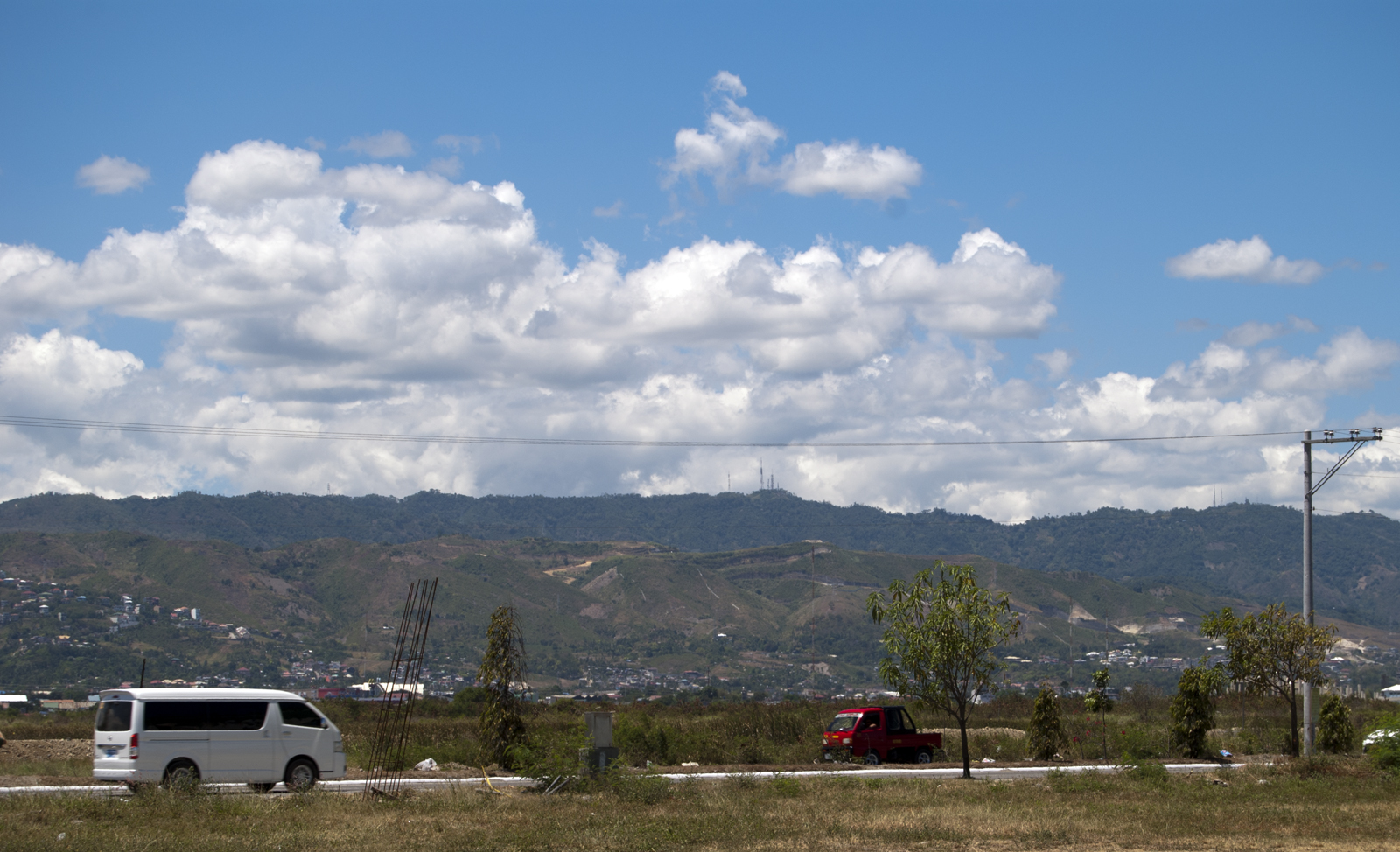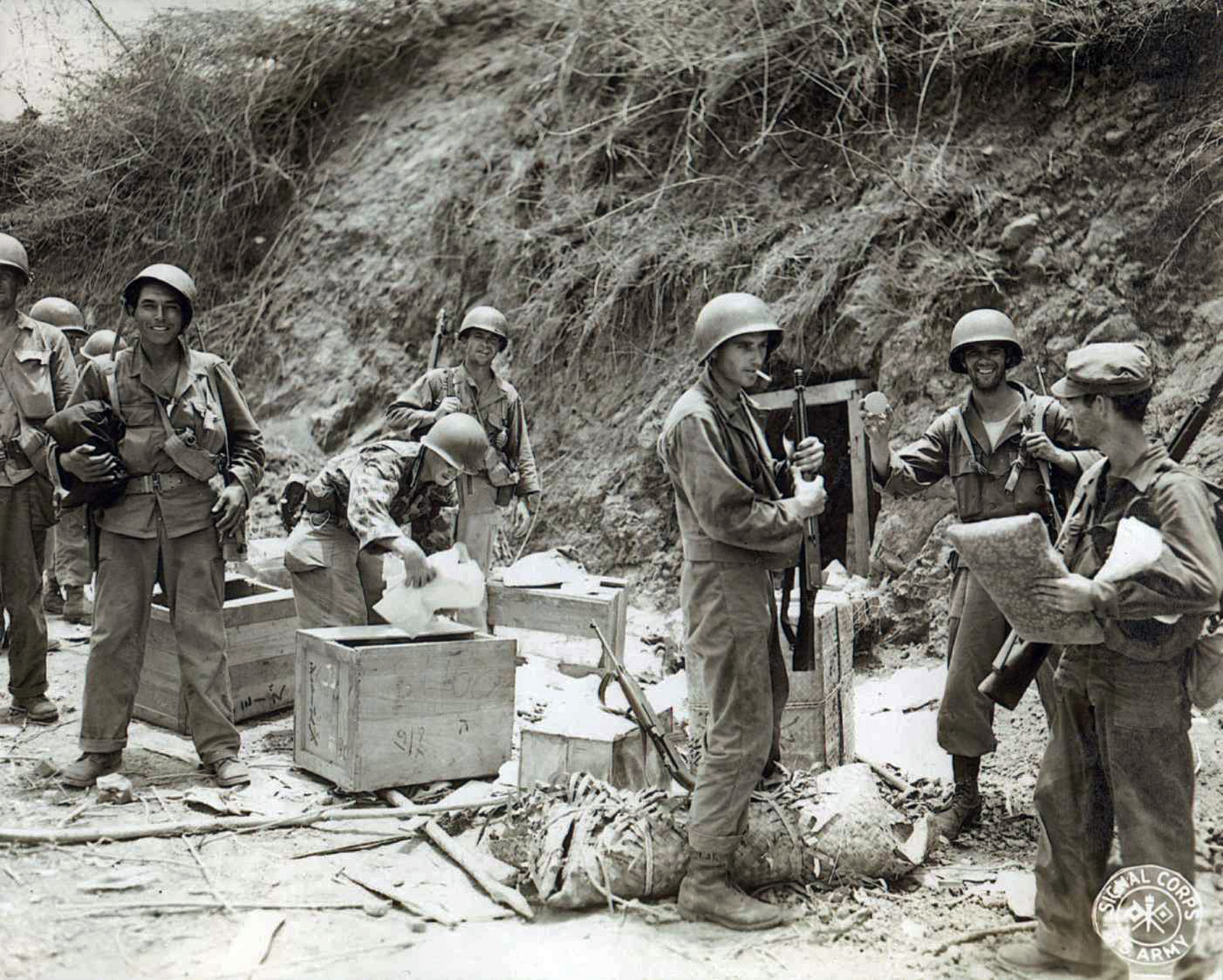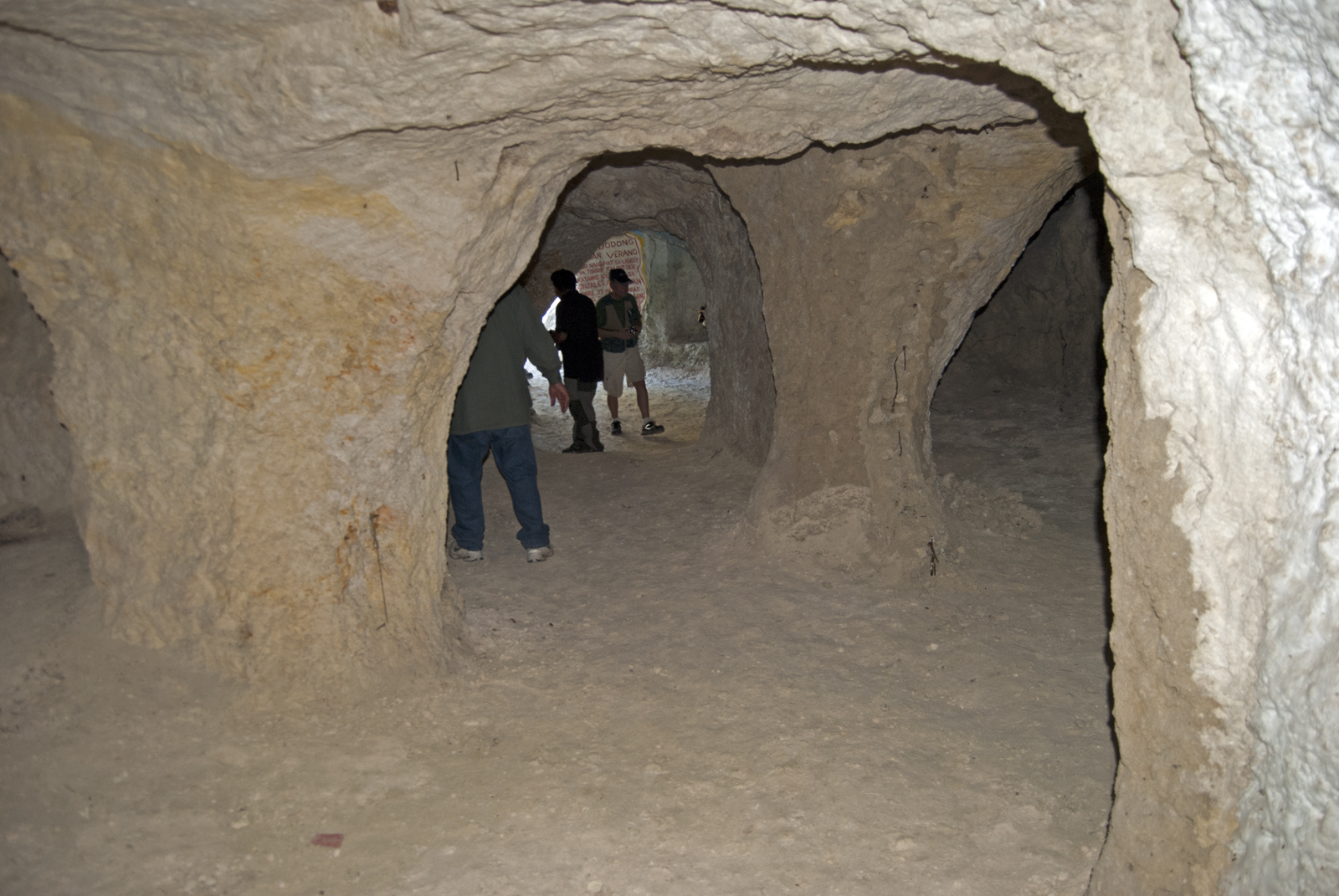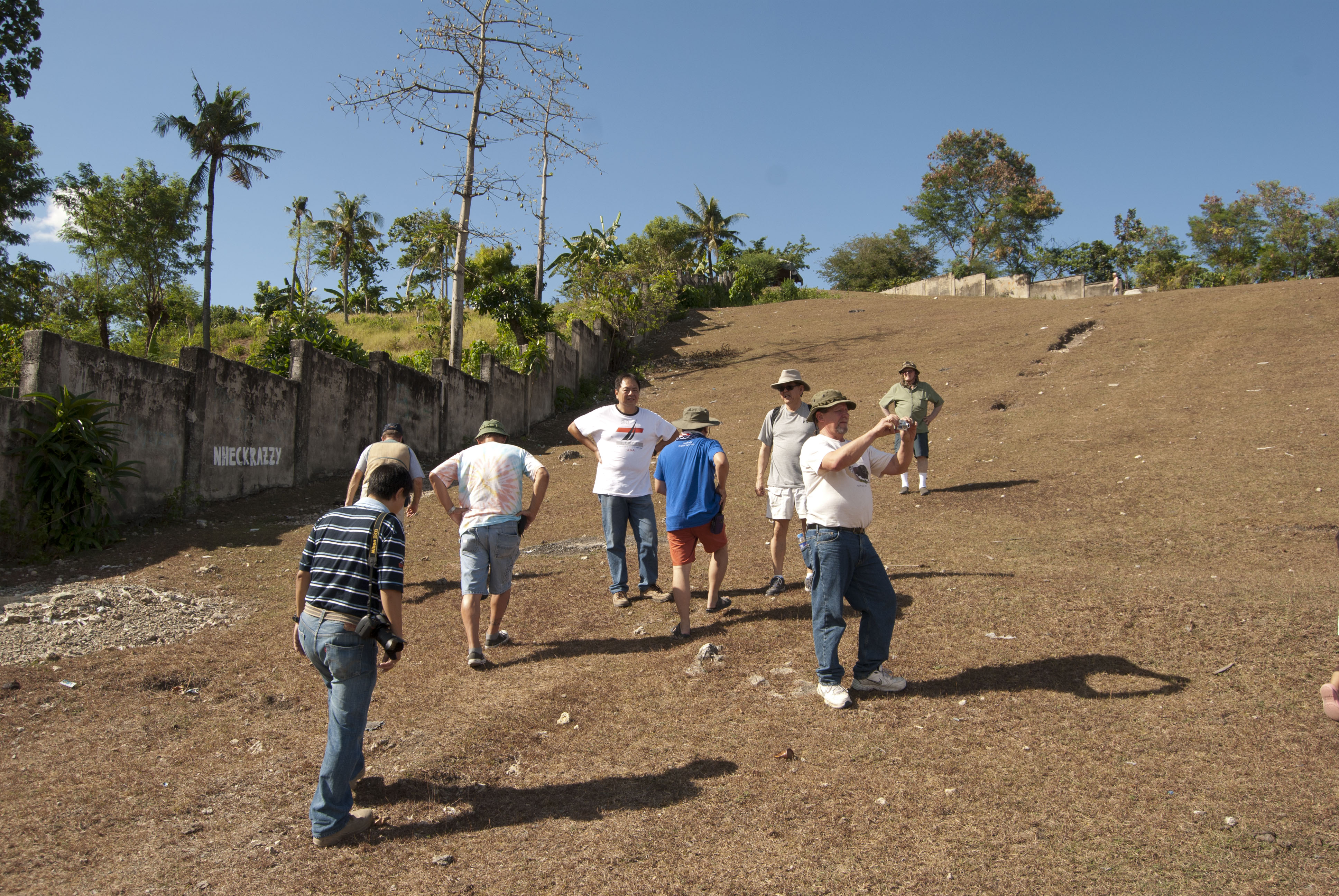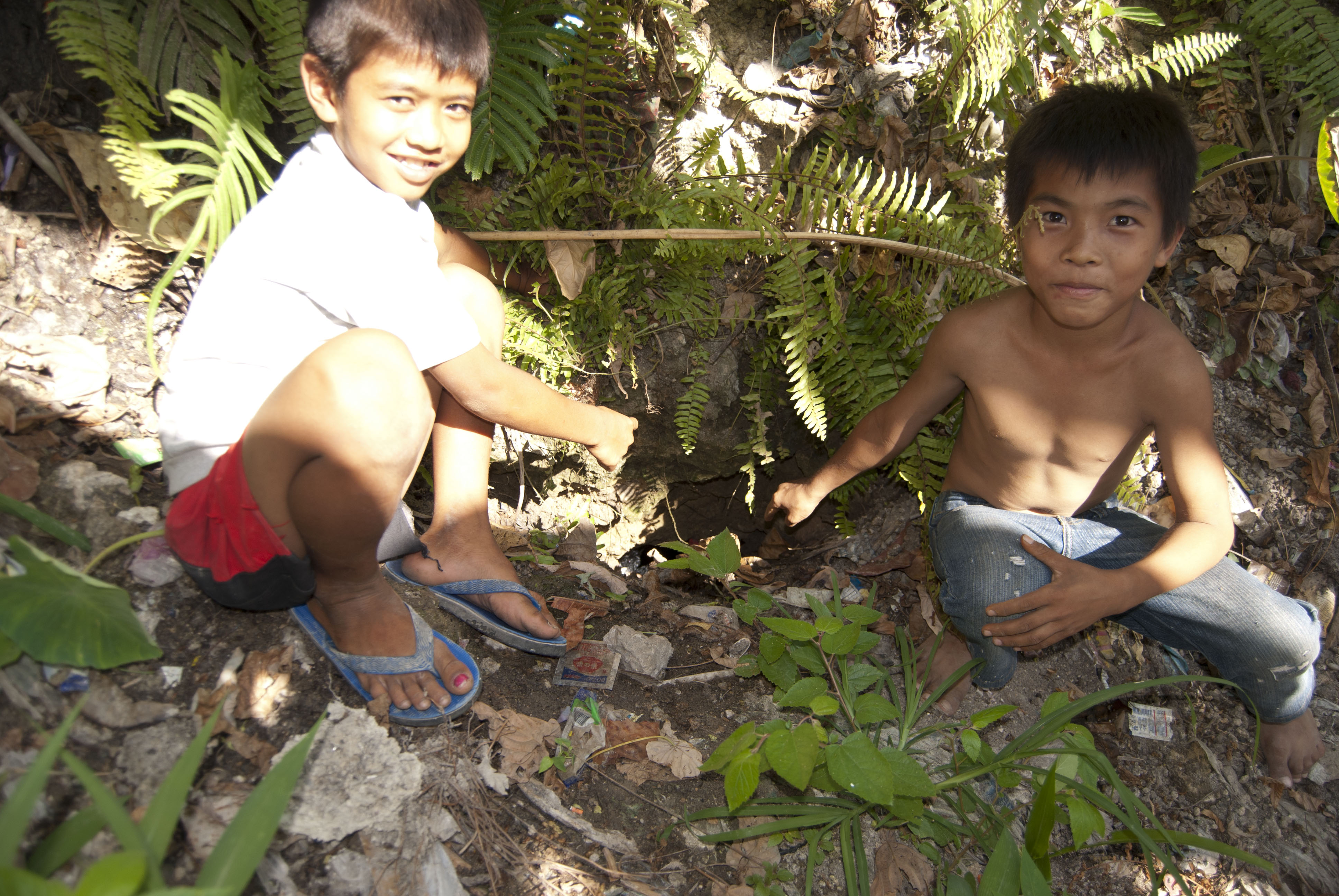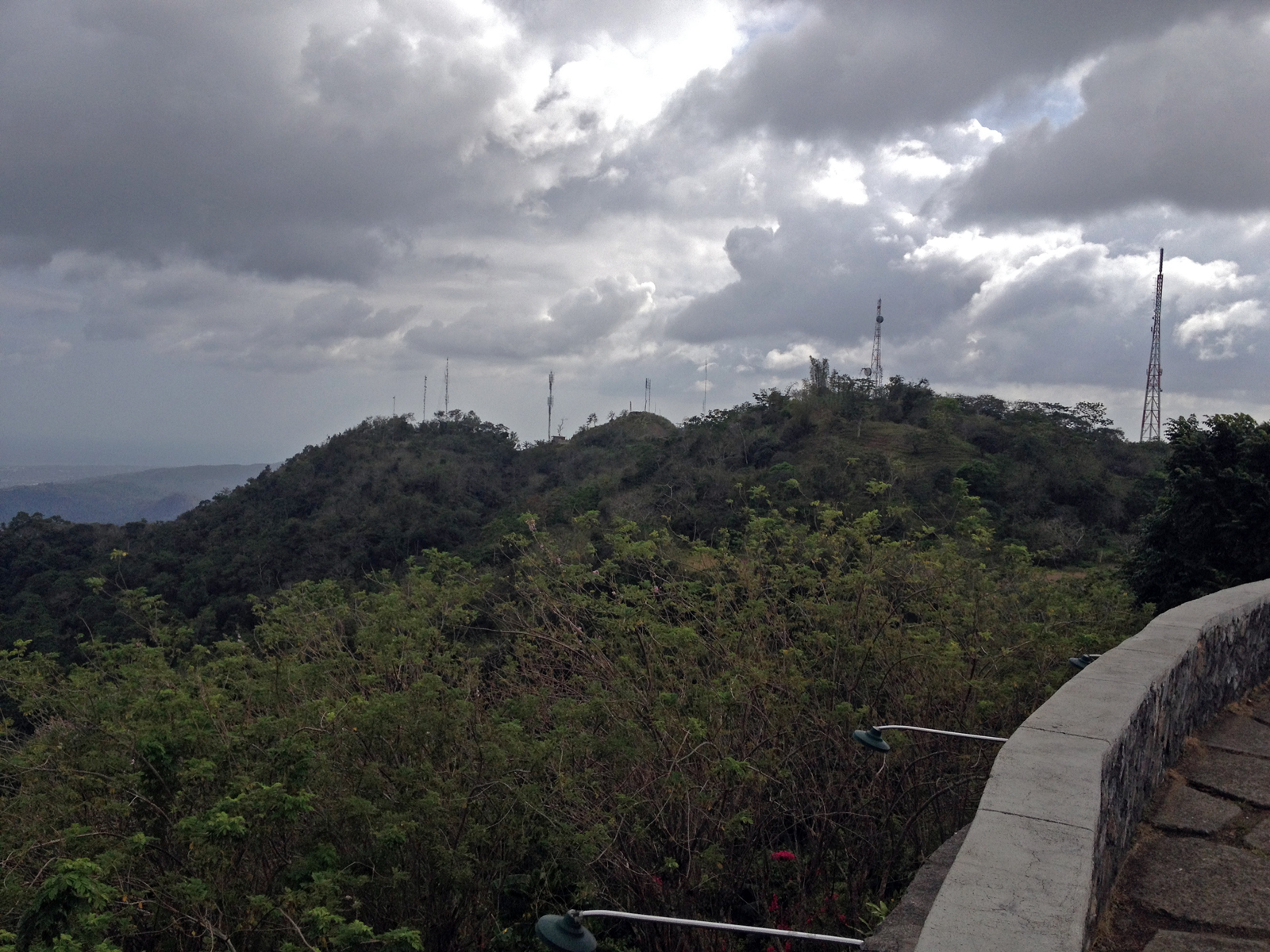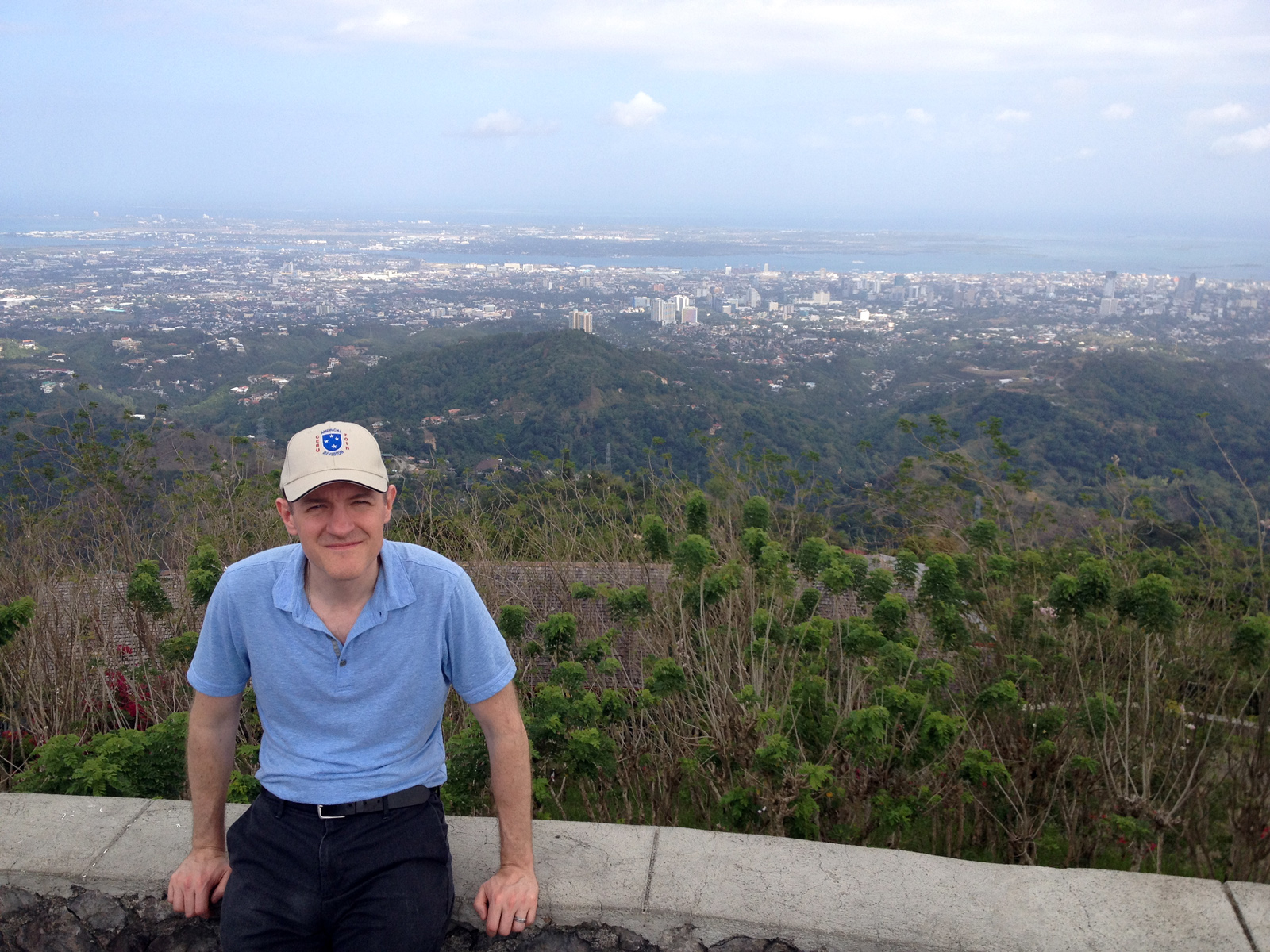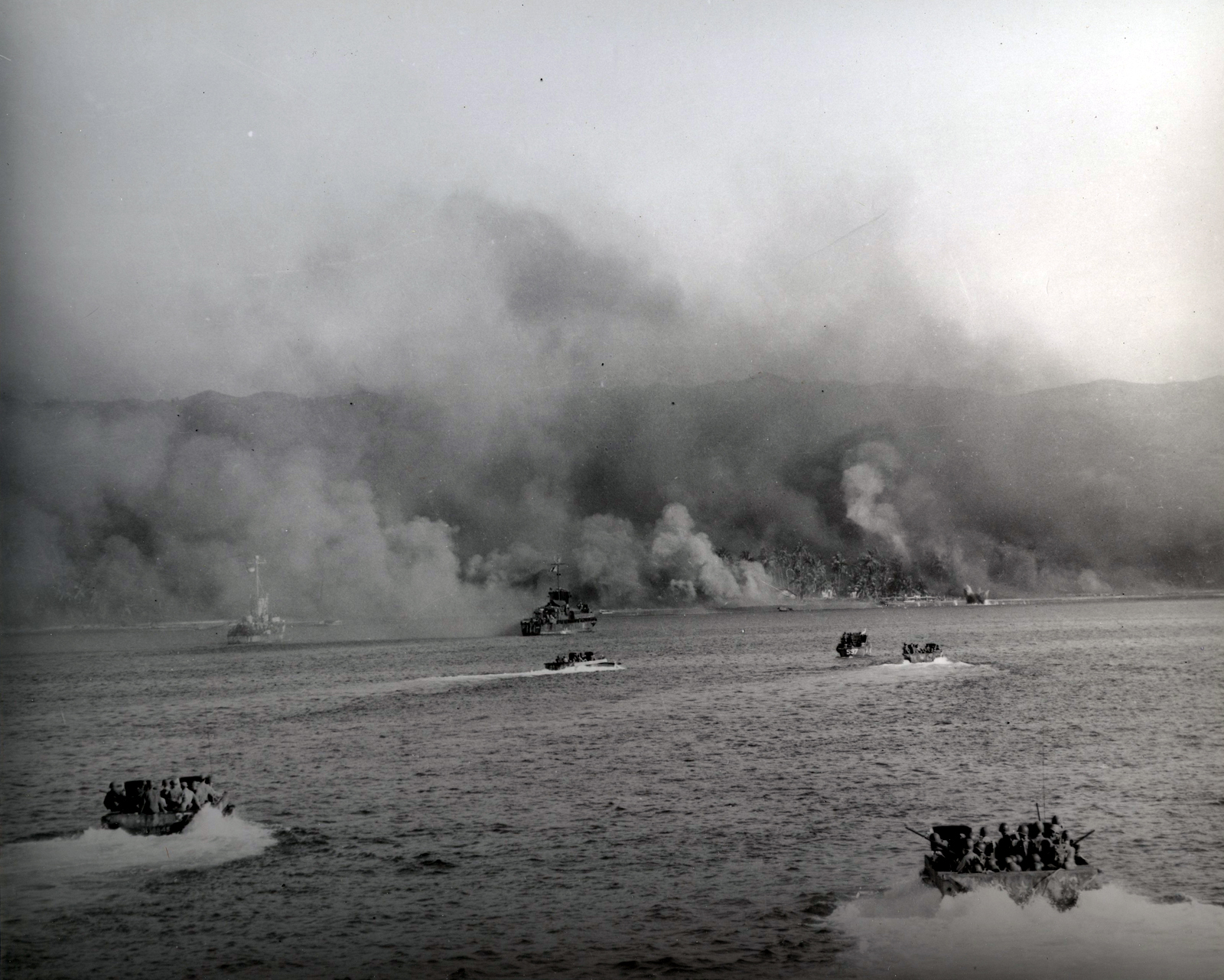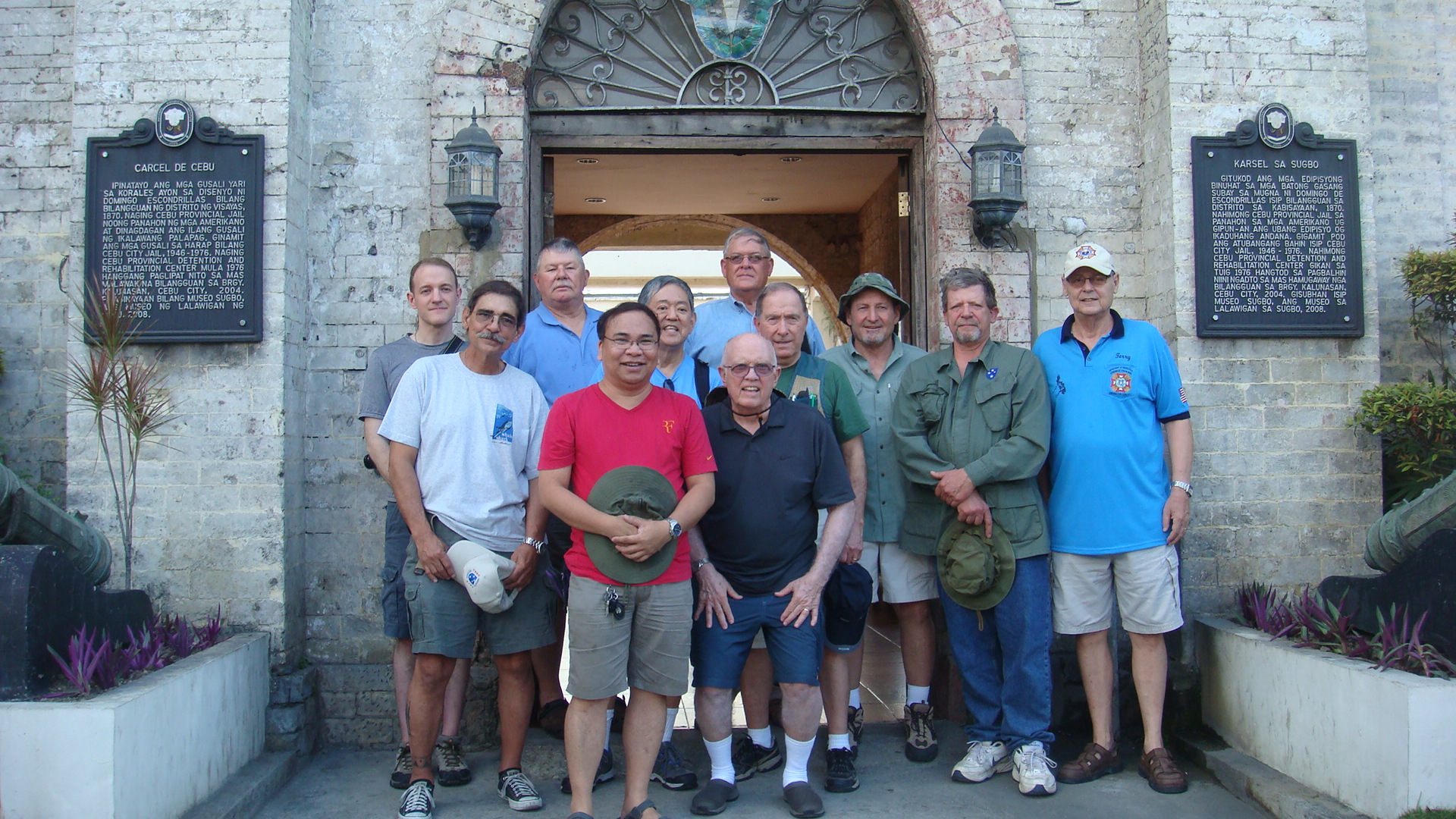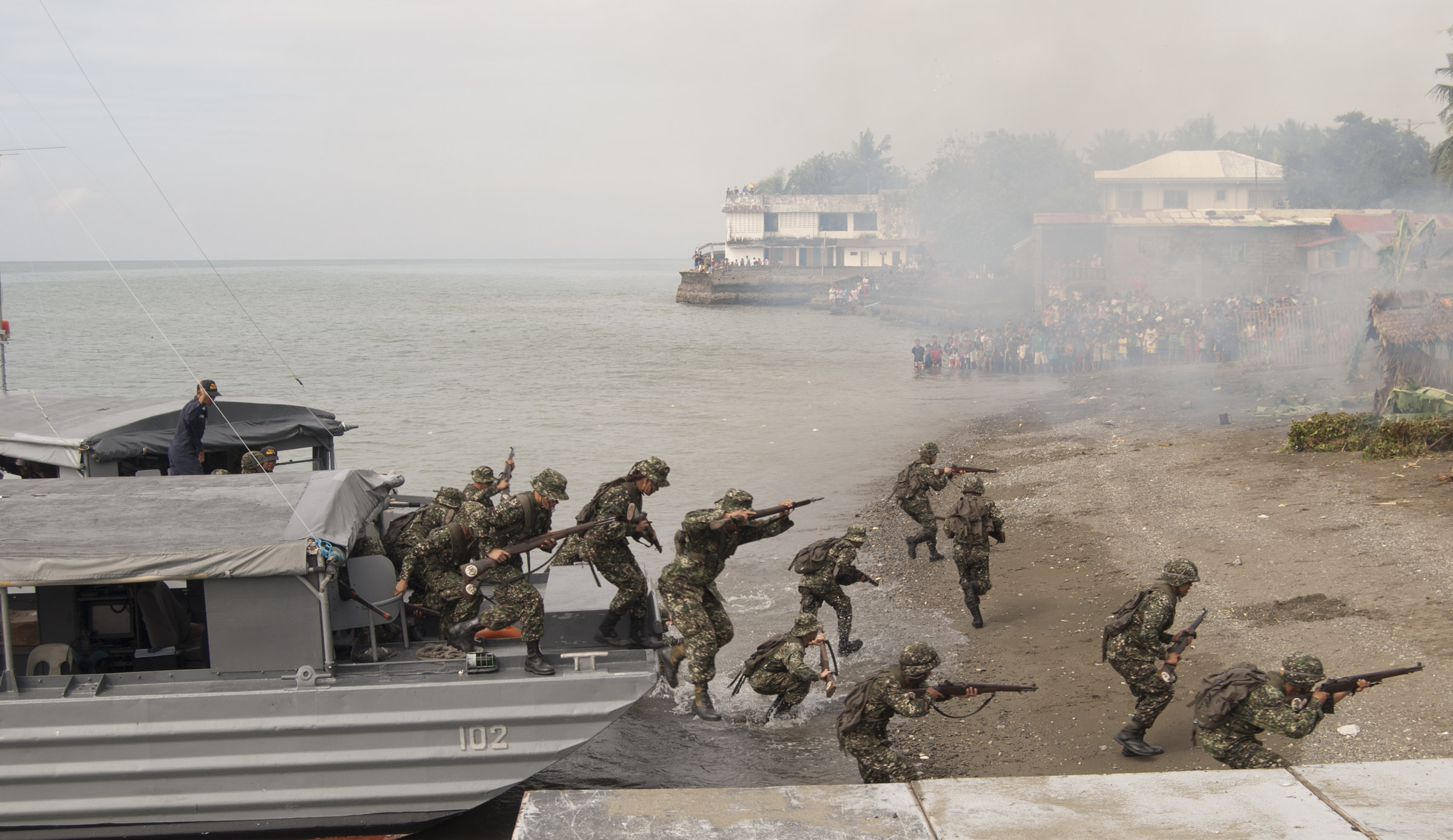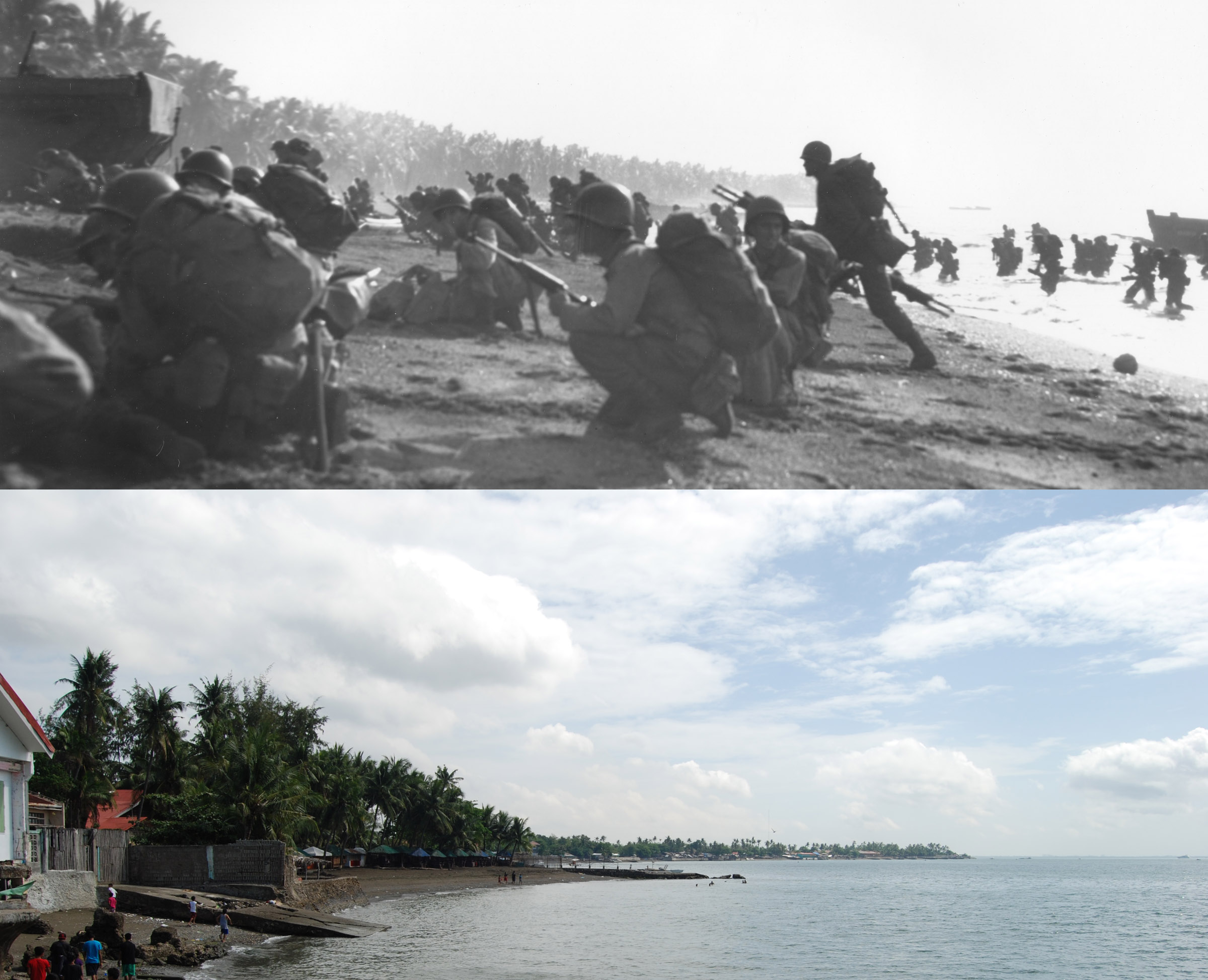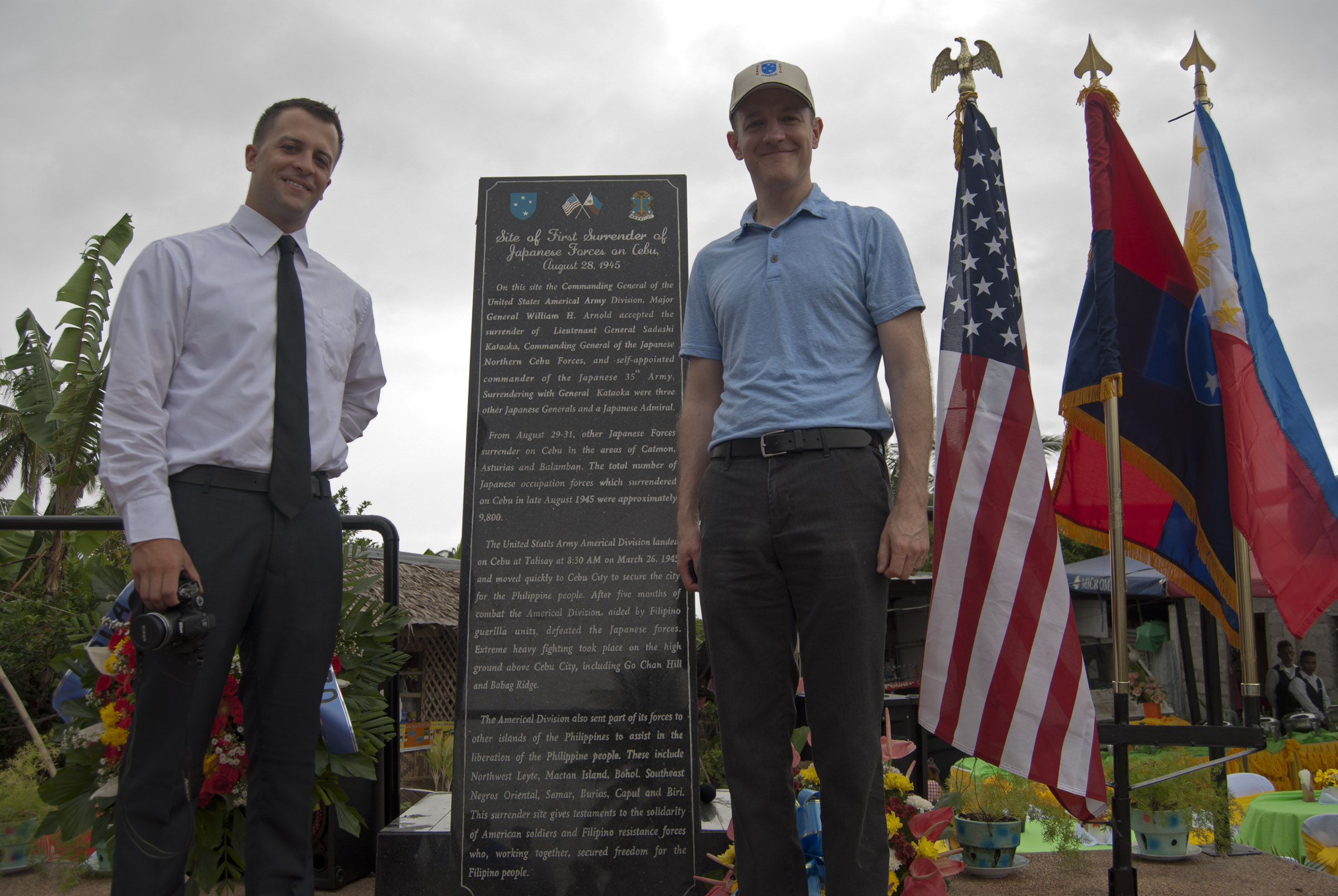(Note: for a detailed introduction to the Americal Division Veterans Association’s 2015 trip to Cebu, along with links to other stories from the trip, read our introductory story Cebu 2015: The Ghosts of World War II, 70 Years Later. Learn more about the World War II battle for Cebu here.)
The most brutal fighting on Cebu during World War II occurred on the imposing hills that rise up just a few miles from the shoreline. The Japanese defenders essentially conceded the beach and Cebu City, choosing to hunker down in caves and fortified positions high in the hills. This was consistent with their overall strategy in the Pacific in 1945, and it led to terrible American casualties in that last year of the war. After securing the city and its airfield, Americal Division troops began to take fire from Japanese emplacements in the hills above. The first half of April 1945 was a terrible slog for the men of the Americal, as they inched their way up the hills in the face of stubborn resistance. The final battles on Babag Ridge in mid-April finally broke the Japanese defense, and caused them to flee northwards along the long, thin island.
Our group from the Americal Division Veterans Association had a chance to visit these hills in 2015. You can see in Photo #1 what those hills looked like in 1945, and in Photo #2 what they look like in 2015. On the afternoon of our first day of touring, our van wound its way up narrow mountain roads, with small shacks and shanties cobbled together to the very edges of the drivable surface. At times, we wondered if we would even fit past vehicles coming in the opposite direction. The hills were covered with heavy tree growth on all sides. In 1945, this was not the case, the terrain was more open. After the war, trees were brought in from abroad as part of a reforestation program.
We first visited the reservoir at Buhisan Dam, which was captured on the second day of the invasion by two companies of the 182nd (not Company G) in conjunction with Filipino guerrillas. After a short drive, we took a quick hike to the location of two Japanese tunnels, carved out of the side of mountain faces (Photo #3 shows tunnels in 1945, Photo #4 shows what they look like in 2015). It was eerie inside the tunnels, particularly when looking out of the firing hole, with a clear view down the road that American troops would used for their advance. This was also our first opportunity to meet the local Cebu media, who followed us around for a bit. You can read one of their stories here. You’ll note that we had some communications issues, as the reporter mistakenly believed that I am a Vietnam veteran. But it made me feel good to get my grandfather Ed Monahan‘s name in the local papers 70 years after he arrived on the island under fire. Another story here features a nice photo of two of our fellow travelers in one of the caves.
On our second day of touring, we visited a significant battle site called Go Chan Hill – and uncovered the story behind its name. Rising up in the foothills at the base of Babag Ridge, Go Chan Hill is a small rise that had a lighthouse tower on it at the time of the war. On 29 March 1945, Company A of the 182nd Infantry was advancing up the hill, when a massive explosion shook the entire area. When the smoke cleared, the company had been virtually annihilated. Already understrength due to the fighting in the previous months on Leyte, the killed and wounded from this explosion rendered Company A unfit for battle, and it was withdrawn. There is some disagreement as to the source of the explosion. The men of the Americal were convinced that the Japanese defenders had set a timed explosion to ignite bombs and ammo dumps in the caves under the hill. Some believe that an American tank fired a round into a cave opening and accidentally ignited an ammo dump.
70 years later, we set out to visit this hill, on the outskirts of the built-up urban center. I was surprised to find that the hill took its name from the family that owned it: the Gochans. Members of the family still live near the hill, in a beautiful complex overlooking the hill itself. The family was gracious enough to invite us over for food and drink, and they shared their family memories with us. It was truly a thrill to meet Mrs. Gochan, who was just a small child during the war. I had the chance to speak with her for a few minutes, and I enjoyed every minute of it. The Gochans also arranged for us to tour the hill, which at this time is mostly free of development. We walked up the steep slopes of the hill itself (Photo #5), and then took a short hike through some woods to see buried openings that lead to the Japanese tunnel complex (Photo #6). We also met up with their cousin Harley for a group outing later in the week. It was a real pleasure to meet this family, and explore their connections to World War II.
Buhisan Dam and Go Chan Hill served as a good introduction to the steep hills of Cebu, but looming above was the rugged range of Babag Ridge. The steep ridge line soars 2,000 feet above sea level, just a few miles from the beach. All of us in the group were surprised at how intimidating these hills were. We’d read about them in history books, but seeing them in person really brought home how difficult it must have been for the soldiers of the Americal to wrest them from the Japanese. We had several chances to visit the ridge during our trip. On our first day of touring, we had dinner at beautiful Chateau de Busay, an elegant restaurant and lodge built just a few hundred feet below the top of the ridge. Knowing full well that the battles along the ridge were the toughest of the Cebu campaign, I had contemplated what it would be like to stand on those hills. Unfortunately, during that first visit to the hill, I did not have a chance for quiet reflection. There were two weddings going on simultaneously on the grounds of the chateau, and their music echoed through the air around us. We did have one rather surreal moment at the Chateau. After dinner, we lounged about, discussing the guerrillas on Cebu with several knowledgeable locals. The quiet night air was broken by a serious of loud cracks. We realized that one of the wedding parties was celebrating with fireworks. The rattle and explosion of the fireworks continued for several minutes, and for a brief moment I imaged what it must have been like during the night battles along the ridge during the war.
One downside to our first trip to Babag Ridge is that we did not make it to the top of the ridge. From what we understand, there may be Japanese fortifications still in place on the hill, but they are not easily accessible. I felt a bit of remorse throughout the week that we had not made it to the top, but on the last day of the trip, following the dedication of the surrender monument, I found myself with a few extra hours before my flight was scheduled to depart for Manila. I’d been hearing about a place called “Tops,” a scenic spot at the top of the ridge. We consulted with the hotel concierge, and he said it was a short drive, so Sam Arnold and I secured a cab and headed up. I was a bit nervous, with my flight scheduled for that evening, but the trip proved well worth it. Tops Skyline Garden is the best view of Cebu City and the coastline that you can get. It is a stunning panorama, with a commanding view for 180 degrees. I don’t know if this hilltop is the one that the men of Company G assaulted on 12-13 April 1945 in a daring night time bayonet raid. It might have been, or maybe it was one of the nearby hill tops (see Photo #7). At this time I can’t say. But what I can say is that my last few hours on the island were well spent in that short side trip to Tops (see Photo #8).
Read the next piece in this series here: Cebu 2015, Part IV: Battle Sites on the West Coast

